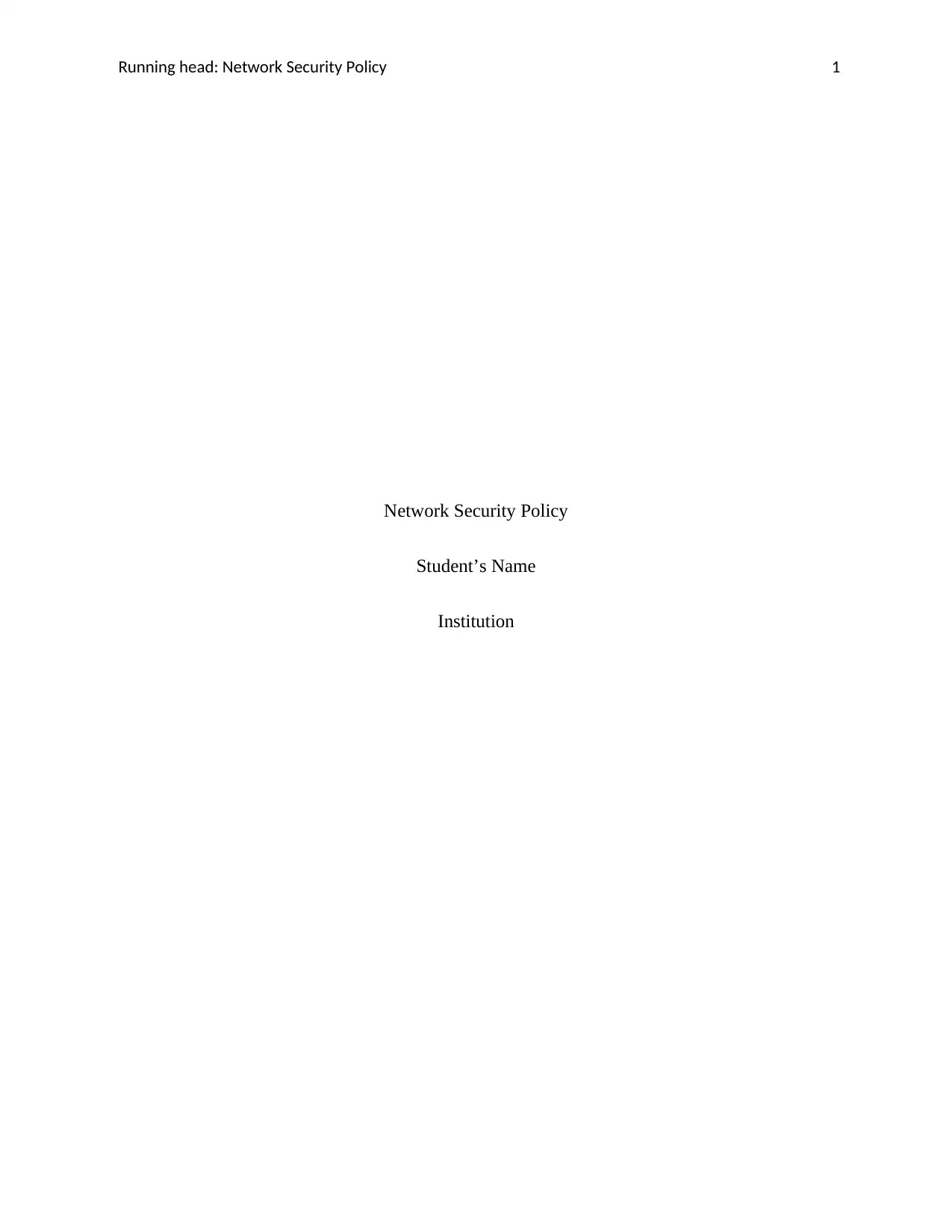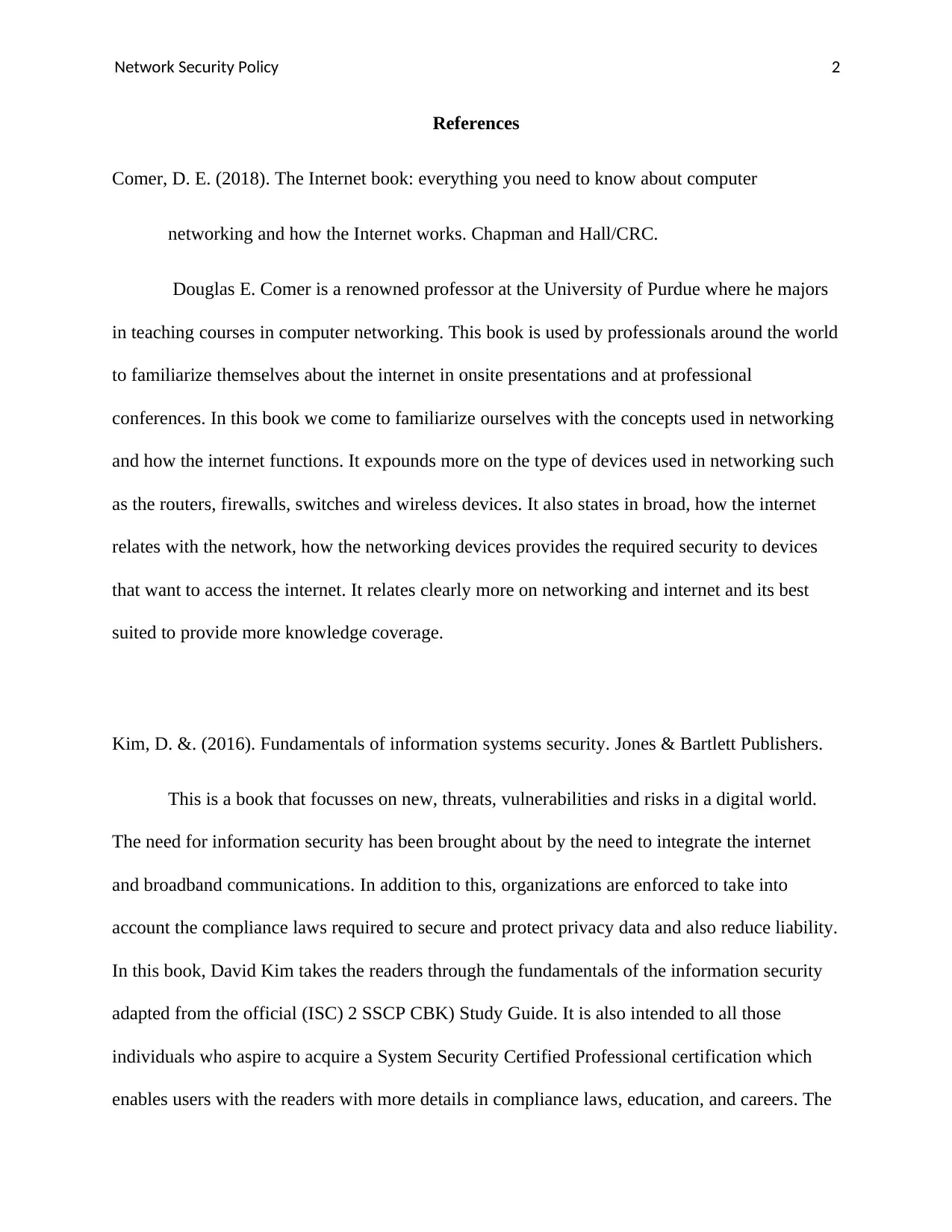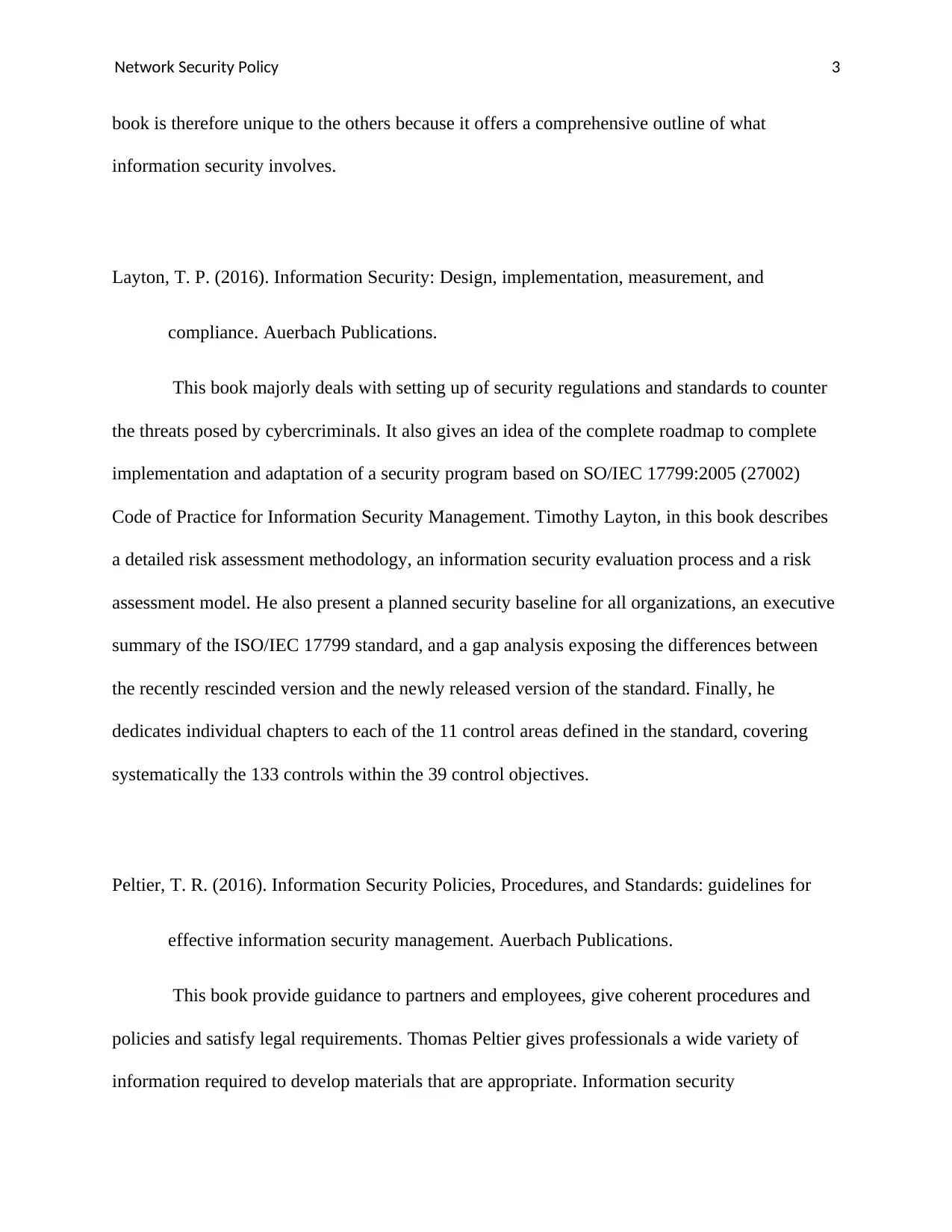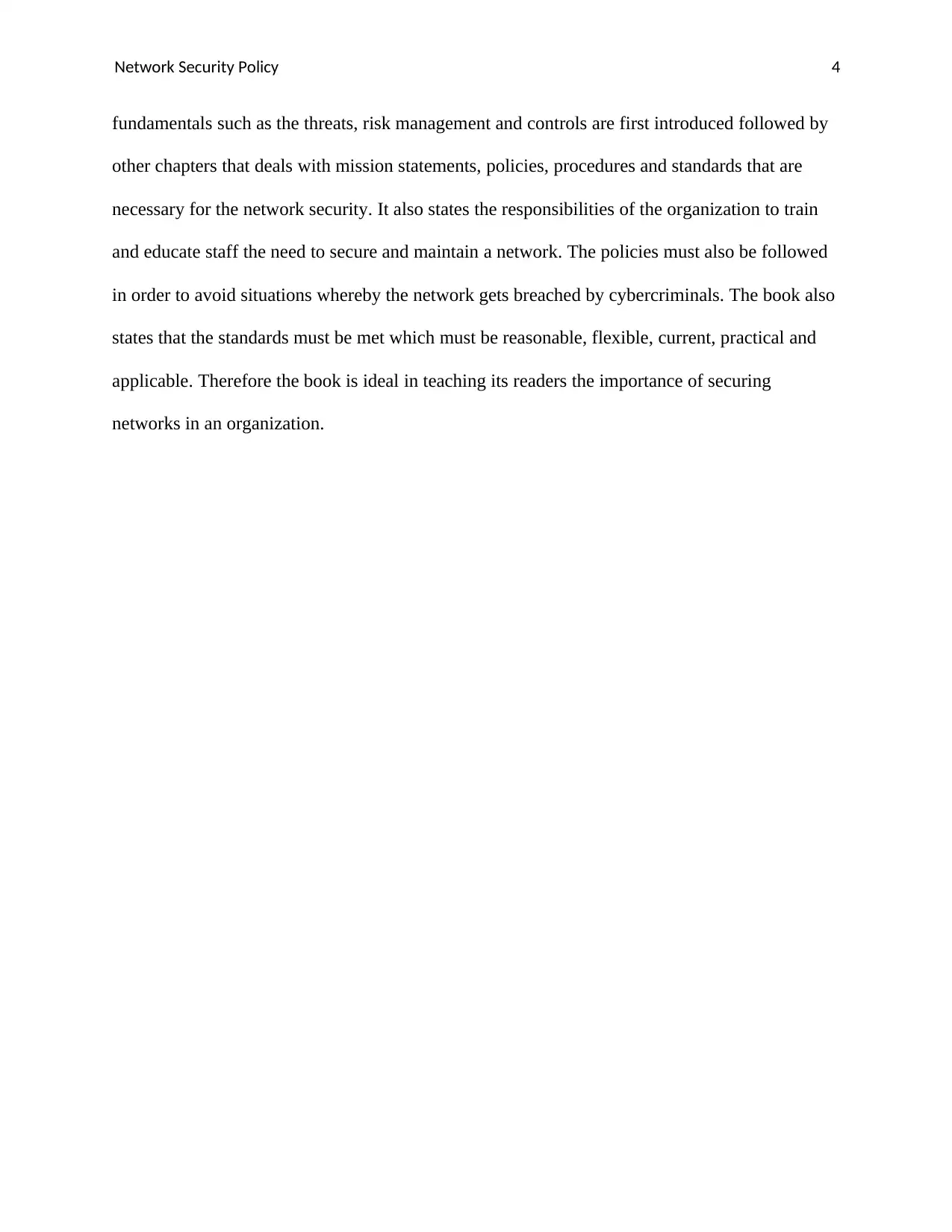ENGR8762 Computer Networks: Network Security Policy Bibliography
VerifiedAdded on 2023/06/03
|4
|720
|83
Homework Assignment
AI Summary
This assignment is an annotated bibliography focusing on Network Security Policy, a component of information security. The student was tasked with researching and selecting four relevant papers to aid in developing a policy within this domain. The annotated bibliography includes citations and concise summaries of each selected source, highlighting their relevance to the topic. The chosen papers cover various aspects of network security, including internet usage, email policies, malicious software protection, and physical and environmental security. The student's research incorporates scholarly materials, providing a valuable resource for understanding and evaluating the quality of information on the topic. The references include books by renowned authors such as Comer, Kim, Layton, and Peltier, each focusing on different aspects of network security, from the fundamentals of computer networking and the internet to the design, implementation, and management of information security policies and standards. The bibliography provides insights into how the internet relates to the network, the devices used, and the importance of securing networks.
1 out of 4





![[object Object]](/_next/static/media/star-bottom.7253800d.svg)